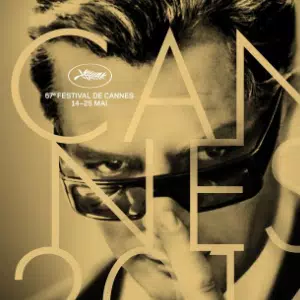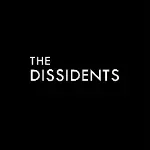Francis Ford Coppola, the master filmmaker we haven't seen in quite a few years, has been appearing in Hollywood headlines quite often lately. A month after its premiere at Cannes, his new film Megalopolis, which has received mixed reviews, has finally found a U.S. theatrical distributor: Lionsgate, the company he worked with on the restored version of Apocalypse Now. But along with the good news came the bad: Lionsgate was unwilling to pay for the promotional budget of his highly experimental new film. In other words, the director would have to cover the $15 million to $20 million cost himself.

This isn't the first time Coppola has taken such a financial risk: he paid out of his pocket for films like Apocalypse Now, One from the Heart, and The Cotton Club, with mixed results: Apocalypse Now struggled to make its money back, but eventually made Coppola a huge amount of money over the next four decades with its home video product and streaming rights, while One from the Heart and The Cotton Club cost him a fortune and forced him to work for the studios to pay off his debts.
But it was the first time in the new century that Coppola had taken such a risk. His 21st-century career was far more modest than the careers of his "movie brat" peers. While Scorsese and Spielberg are still active on the frontline of Hollywood, and Lucas has become a world-class millionaire with his Star Wars rights, few people have heard of, let alone seen, Coppola's recent works in the 21st century.

But does that mean the latter part of Coppola's career was a failure? That's a matter of opinion. From a commercial point of view, Coppola's three works after 2007, Youth Without Youth, Tetro, and Twixt, did not make much money. But from an artistic standpoint, these films are the attempts of a director who has experienced both the rise and the fall to return to the basics and to explore his most important concerns, and their novel and unique filmmaking techniques are also more inspirational than many mainstream large-scale productions.
They are the Don Quixote-like attempts for a grand filmmaker to regain his youth.

Youth Without Youth (2007)
This fantasy film, which was Coppola's first directorial effort after a ten-year hiatus, tells the story of a seventy-year-old philosophy professor who is miraculously transformed into a young man after being struck by lightning, thus given special powers such as dream learning, perspective, and the ability to move objects with his mind, which he voraciously uses as an opportunity to fine-tune his knowledge of language, history, and the study of time. Years later, he befriends Veronica, a woman who bears a strong resemblance to his young fiancée, a woman who can trace the origins of language, a trait that sends her into an accelerated aging process......

The plot of this movie reminds us of F. Scott Fitzgerald's short story The Curious Case of Benjamin Button, and the movie adaptation of it directed by David Fincher. But Youth Without Youth is a much more obscure and mysterious rendering of this type of story. It explores the topics of aging and death that obsessed Coppola, then nearing seventy, the insistence on vitality and vigor, and fated romance with a sense of déjà vu. An old man's romantic grief seeps out of it movingly.

Tetro (2009)
Compared to Youth Without Youth, Tetro is a slightly smaller proposition. Bennie travels to Buenos Aires to visit his long-lost brother, Tetro (Vincent Gallo). Tetro's girlfriend, Miranda (Maribel Verdú), takes good care of Bennie, but the emotionally disturbed Tetro snubs his brother and forbids him to talk about any family-related matters. Bennie discovers Tetro's unfinished manuscript of a play, adds an epilogue to it and publishes it without the authorization of Tetro. The play is immediately praised by a literary critic (Carmen Maura) who dislikes all of Tetro's previous works. An initially furious Tetro finally agrees to attend the "Patagonia Festival" organized by the critic, but disappears halfway through. Following his disappearance, his family secrets, past loves, and hates eventually come to light.
Tetro is visually reminiscent of Coppola's boldest film in the 1980s: Rumble Fish. Mostly in black and white, with color appearing at dramatic moments, Coppola carries his baroque aesthetic to the extreme. The addition of musical elements is a reflection of Coppola's origins as the son of an artistic family, and the thickness of his material is hard for any Hollywood filmmaker to match.

But despite the honor he gives to his family tradition, Tetro tells the story of a young man's rebellion against patriarchal authority. Bennie's return uncovers secrets that his family has tried to hide. In the face of the corruption of the father figure, Coppola has no reservations about siding with the wrongly treated young man. It is clear that he is trying to leverage such a stance to gain a new lease on life in art.

Twixt (2011)
Twixt is a vintage horror story. Coppola is no stranger to this territory: while working for Roger Corman in the 1960s, he directed the horror film Dementia 13, as well as parts of The Terror. In 1991, he directed the film adaptation of Bram Stoker's classic vampire novel Dracula. Coppola's flamboyant visual style has always been well-suited to the aesthetic demands of horror movies.
But Twixt is a downright low-budget production. From the unhinged protagonist played by Val Kilmer, to the cheap production design and the paint-by-numbers 3D blood-spattering sequences, everything just reeks of a B-movie feel. Coppola once again resorts to a black-and-white-meets-color visual approach, but this time it seems to be just a cover for a stretched production budget.
Strangely, the low-budget quality of Twixt is in keeping with the nightmarish feel of it. Ultimately, what is wrapped around the core of this tale associated with Edgar Allan Poe, a down-and-out horror fiction writer, and a teenage vampire named V, is Coppola's unrelenting bereavement of the loss of his son. Twixt is an incredibly personal and emotional work, and it could even be argued that you'll only be touched by this film if you know Coppola's life story.

Coppola's three 21st-century films show the evolution of an aging filmmaker: he no longer wants to please the needs of his audience, he no longer cares about the necessary commercial elements of conventional cinema. He focuses only on the core issues that interest him: love, death, mourning, and family lineage, and in honing them, he gradually removes the superfluous from the essentials. He is grasping the limited time an old man like him has left, as hard as he can.






















































Share your thoughts!
Be the first to start the conversation.